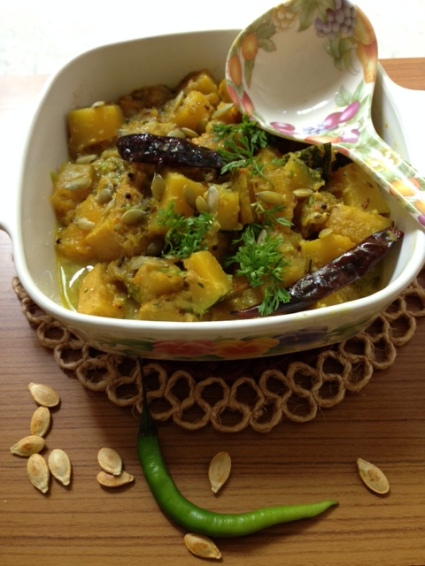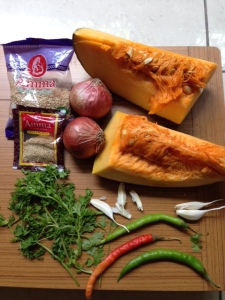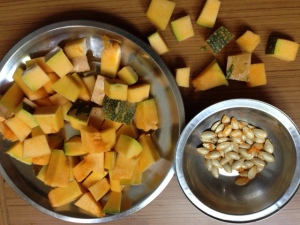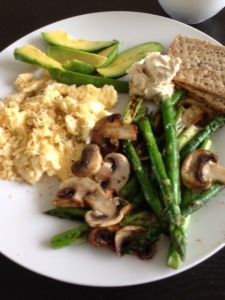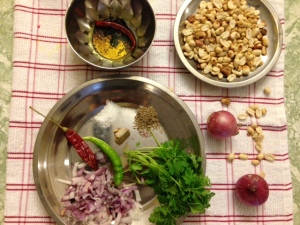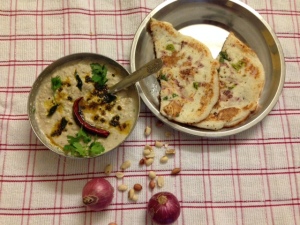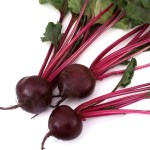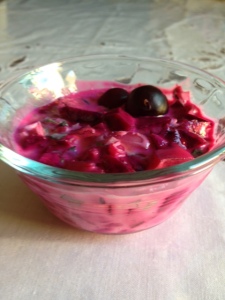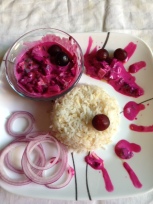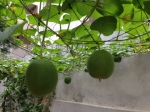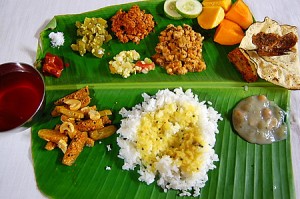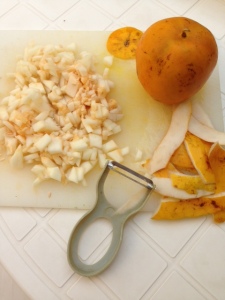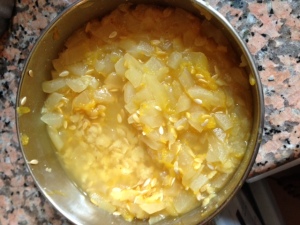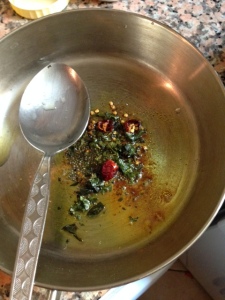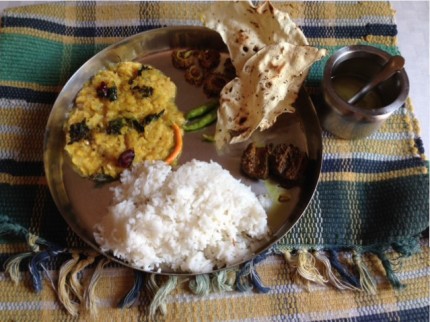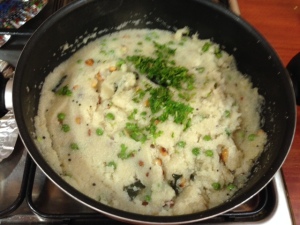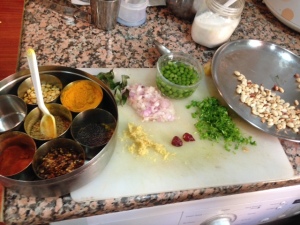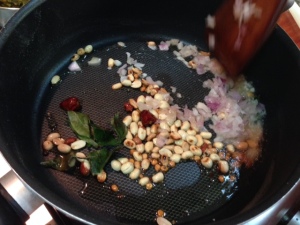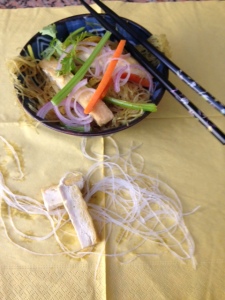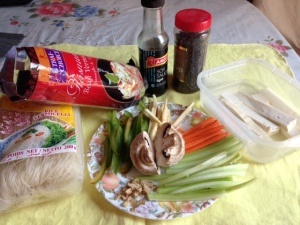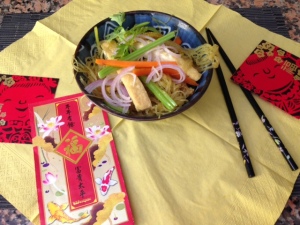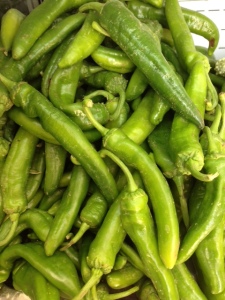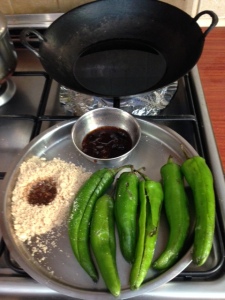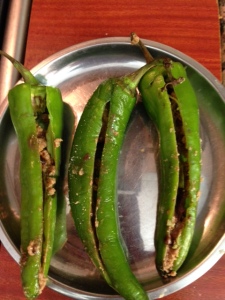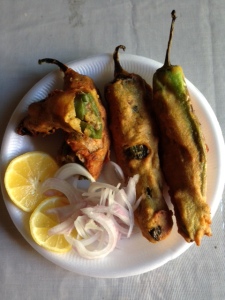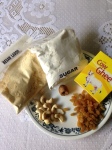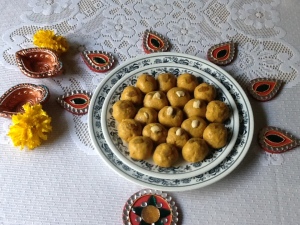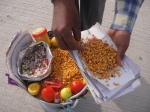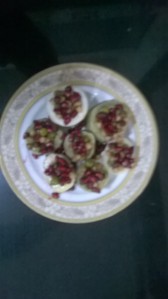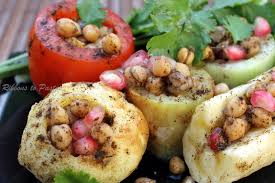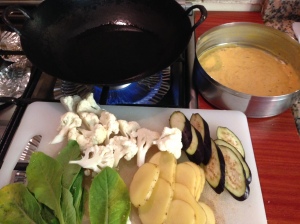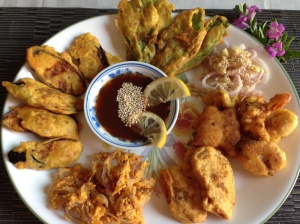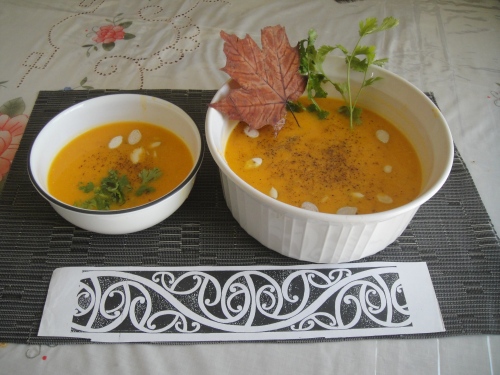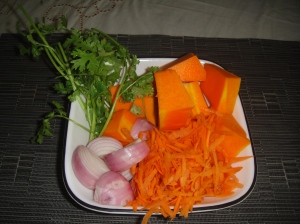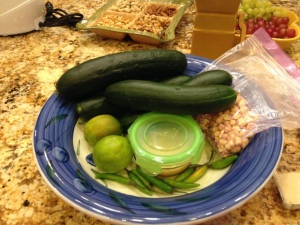I am from Mumbai (British called it Bombay) and Maharashtrian food consists of Pulses, Usaal or sprouts, Koshimbeer or salad, and Roti/ Bhakri made from cereals like Jowar, Bajra and wheat. Geography of the region and local culture play its part on the the cuisine. Rice is grown in coastal Maharshtra and is widely eaten there, whereas, Bhakri is staple food on the central Deccan plateau where millets and cereal are grown. Maharastrian desserts are: Shrikand, Puran Poli, Modak, and Jalebi. For rustic, street food served up on beaches, railway platforms or roadside stalls on highways – it’s the ever popular Bhel puri , Vada Pao, and JhunkaBhakri.
See here for Street food Vada Pao
See here for Mumbai blogpost
Every Indian kitchen has a traditional ‘spice box’ or Masala Dabba, a very important part of an Indian kitchen. Sometimes, it’s a hand-me-down from your mother or your mother-in-law. It is even given along as parting or house warming gift along other kitchen items to set up the new bride’s home. The Masala Dabba stores fresh ‘Tadka’ or tempering ingredients: mustard, cumin, dry red chillies, turmeric, fenugreek or methi, assorted lentils, sesame seeds or peanuts.
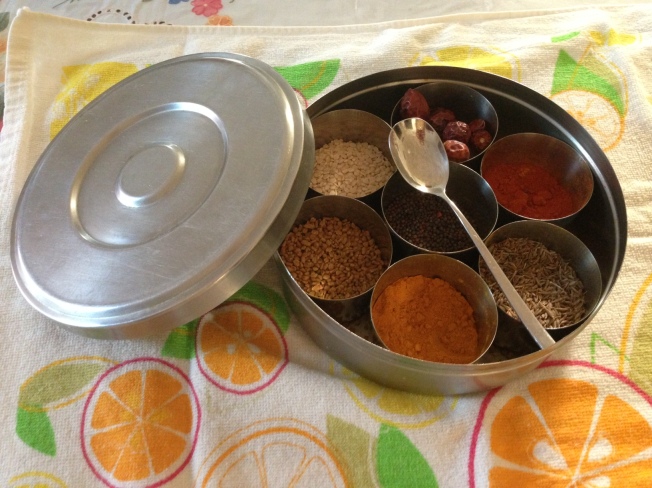
Traditional Spice box or Masala Dabba
I requested my Maharashtrian friends to share their recipes, as they too follow my blog. Hope my other readers will be inspired to share or post comments from around the world!
Guest Post -1
Suchitra is my childhood friend from Mumbai. Growing up together we played girl’s cricket, hide-n-seek, Antakshari – a song game, and enjoyed endless cups of chai and chocolate milk shakes during sleep-overs. Past 20 years, Suchitra lives in the USA and is an exceptionally high-spirited and a passionate cook. She caters, cooks for friends and family and even conducts classes ! Thanks Suchitra.
You can find her on Culture Club : http://iipdigital.usembassy.gov/st/english/inbrief/2012/04/201204043326.html#axzz2jB8H2LaH
Masale Bhaat or Spiced Rice (Maharashtrian Style)
2 1/2 cups rice ( Preferably Basmati)
5 cups water (Hot)
3-4 tsp oil
1/2 tsp. Mustard seeds
1/4 tsp. Hing ( Asafoetida)
1 tsp. Haldi (turmeric )
1-2 green Chillies
1sprig of Curry leaves (Kadhi Patta Leaves)
1-1/2 tsp. Bhaji Aamti Masala
1/2 tsp. Jaggery (Gud)
1cup Tendli / Tindora sliced long (see picture below)
Salt to taste
Garnish
fresh (Frozen) grated coconut, ghee(optional), cilantro, lime.
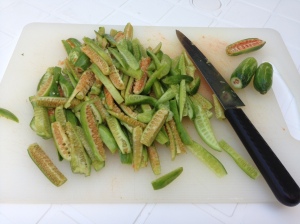
Sliced Tendli /Tindora vegetable
Method:
Step 1
Soak rice in water for 1-2 hours
Step 2
Strain the rice and remove all the water before making the Masale Bhaat.
Step 3
In a pan add oil. Let it heat up.
Add mustard seeds. when they pop, lower the heat and add hing, haldi. Add chillies and curry leaves. (Keep a lid handy, cover the pan before adding chillies and curry leaves).Add the sliced Tindora ( Gherkins)
Step 4
Add the rice to the Tadka (Tempering)
Mix it well, saute for 3-4 min. Add the Masala. Stir well.
Step 5
Add 5 cups hot cups. Add salt, stir well.
Let it come to a boil. Add Jaggery (brown sugar). Lower the heat, put a lid on the pan. Check after 7-10 minutes. Masale Bhaat will be ready to serve. Garnish it with freshly (thawed) coconut, cilantro, lime and ghee.
Cucumber Koshimbeer or Cucumber Salad
3-4 Cucumbers (English or Pickling). If using pickling cucumbers then take 5-6
3/4 cup roasted, crushed peanuts
1-2 Green Chillies
salt, Sugar to taste
lime juice (about 1 lime)
1/4 cup Cilantro
Ingredients for Tadka or Chonka (Seasoning)
Ghee about 1-1 1/2 tsp.
1/2 tsp. cumin seeds
Method:
Step 1
Peel the cucumber, chop them small. Crush the peanuts and chillies.
Step 2
In a medium size bowl add the chopped cucumbers, crushed peanuts, lime juice. Add Cilantro. Toss together
Step 3
In a smallest pan, heat the ghee, when it comes to the smoking point, turn off the flame and add Cumin seeds.
The seeds should make a popping sound and splutter in the ghee. Pour it over the Cucumber mixture.
Step 4
When you are ready to serve add the salt and sugar. Toss it together and serve. *If you add salt and sugar too early the cucumber has the tendency to get watery and soggy. We want the salad to be crisp.
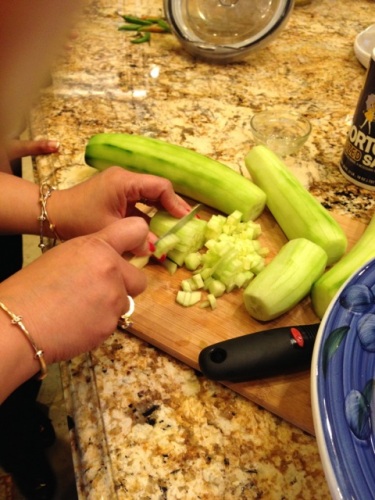
chopping cucumbers finely
I do the Koshimbeer bit differently:
I love fresh green Mung sprouts, they add protein into my diet. So I tend to toss it up with the traditional Koshimbeer recipe and give it a twist. Fresh grated coconut sweetens the taste. Crunch, crunch , crunch — sprouts, cucumber, peanuts !
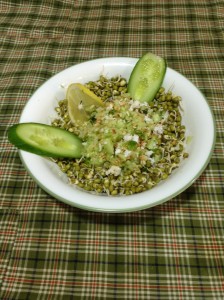
Cucumber Koshimbeer
Guest Post – 2
Manisha is another Maharashtrian friend, who lives in Hyderabad. A teacher by profession she manages her home artistically and spiritually. She is learning to use the technology and enjoys reading Marathi literature. She share here a recipe, though not made in Maharashtrian cuisine
Aloo Kofta curry (Kofte is a Persian /Arabic word for meat or vegetable balls, soaked in a curry) Ingredients:
Aloo / Potato – mashed 100 gm
Dudhi /Bottle Gourd grated 250 gm
Paneer 120 gm
Green chilli 10 gm,
Green coriander 10 gm
Salt 5 gm
Cornflour 20 gm
Aloo wafer gravy 250 gm,
Cashew nuts 20 gm,
Khoya / Condensed thickened milk -30 gm,
Spinach leaves 50 gm.
Gravy with Potato Wafers
Crush the potato wafers in the mixer to make a semi -solid crush.
Lightly roast some wheat flour / Atta to golden brown and mix with turmeric, cardamom powder, and roasted cumin powder, a little sugar and a cup of milk. Remove all this from mixer and adjust the water for consistency and juice of half lemon .Vegetable gravy is ready for use.
Method:
1. Peel and grate gourd and boil in just enough water to make it tender.
2. Grate paneer, mix it with Aloo/ Potato mashed & grated gourd.
3. Add salt ,pepper powder , & corn flour . Knead it like dough and form into small Kofte balls of 30 gm.approx.
4. Stuff the balls with khoya , cashew nut & raisins.
5. Deep fry the koftas in cooking oil till golden-brown colour.
6. In separate pan heat some butter /oil and add minced spinach. Saute for 2/3 min
7. Add prepared Wafer gravy and cook till first boil.
8. Add koftas gently into the gravy. Also add a little water to adjust the consistency. Cook for 2 min.
9.Garnish with green coriander and serve hot with rice.
If you wish to share your recipes or travel anecdotes , do let me know.
All content and images copyright Veena S. (2013 -2020) http://www.walktomarket.wordpress.com. Please see copyright disclaimer.
19.097461
72.841116

